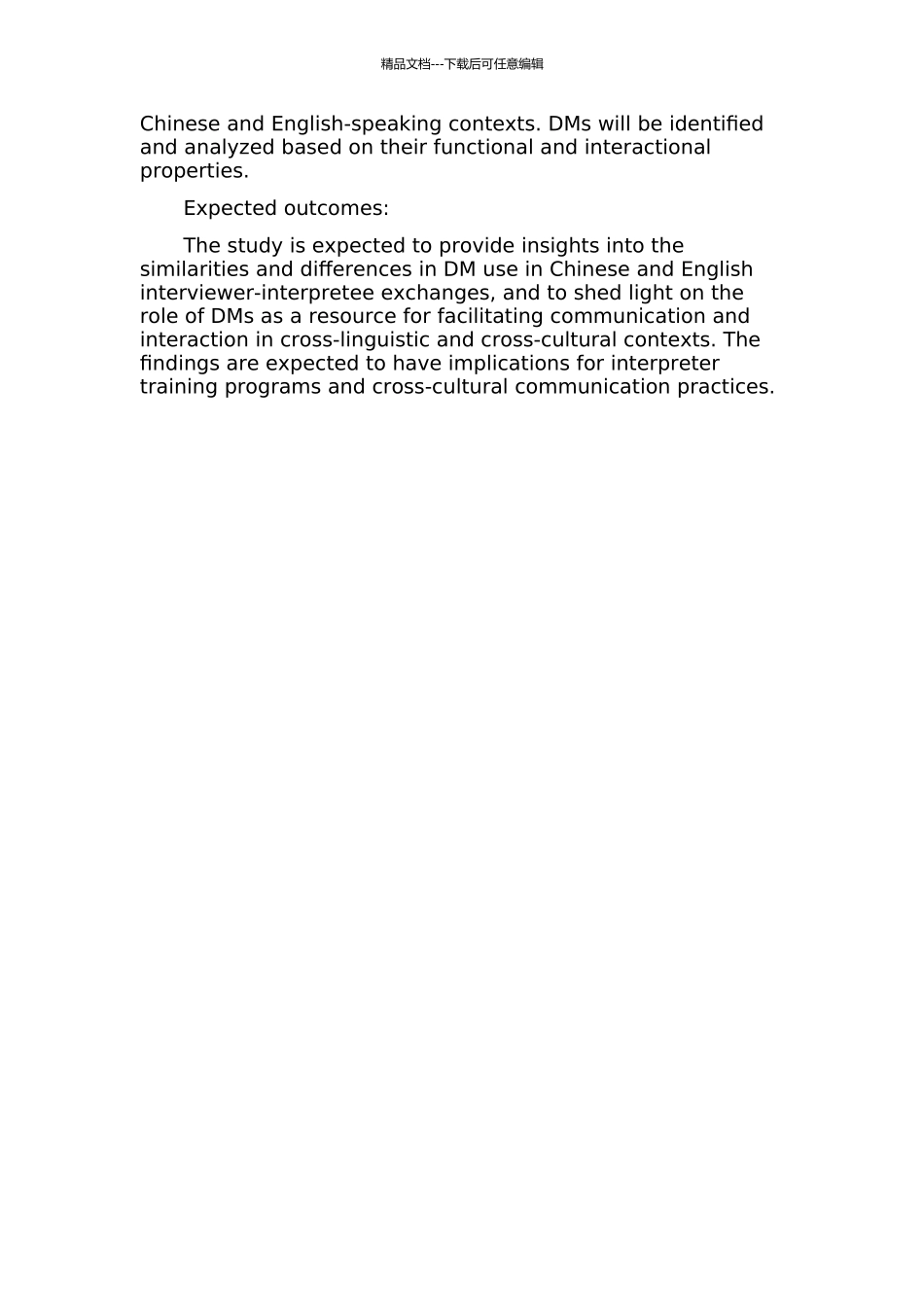精品文档---下载后可任意编辑中英答记者问语篇中介入资源的对比讨论的开题报告Title: A comparative study on the use of discourse markers in Chinese and English interviewer-interpretee exchangesIntroduction:This study aims to investigate the use of discourse markers (DMs) in interviewer-interpretee exchanges between Chinese and English-speaking participants. In particular, the study will explore the differences and similarities in the use of DMs as a resource for facilitating communication and interaction in cross-linguistic and cross-cultural contexts.Background:Recent studies have shown that DMs play a significant role in facilitating communication and interaction in dialogue across languages and cultures. In interviewer-interpretee exchanges, DMs have been found to be particularly important in managing turns and indicating speaker attitudes and intentions.However, studies of DM use in cross-linguistic and cross-cultural communication have been largely limited to analyses of English-speaking contexts. Little is known about how DM use varies across different languages and cultures. This study seeks to address this gap by comparing DM use in Chinese and English interviewer-interpretee exchanges.Research questions:1. What are the similarities and differences in DM use in interviewer-interpretee exchanges between Chinese and English-speaking participants?2. How do these similarities and differences reflect differences in cross-linguistic and cross-cultural communication norms and practices?3. To what extent do DMs serve as a resource for facilitating communication and interaction in interviewer-interpretee exchanges in Chinese and English-speaking contexts?Methods:This study will use a qualitative approach to analyze recorded interviews between interviewers and interpreters in 精品文档---下载后可任意编辑Chinese and English-speaking contexts. DMs will be identified and analyzed based on their functional and interactional properties.Expected outcomes:The study is expected to provide insights into the similarities and differences in DM use in Chinese and English interviewer-interpretee exchanges, and to shed light on the role of DMs as a resource for facilitating communication and interaction in cross-linguistic and cross-cultural contexts. The findings are expected to have implications for interpreter training programs and cross-cultural communication practices.

